
Physical Therapy on animals such as our cat and dog friends and others of course, involves biomechanics, physics, consideration of their anatomy, physiology and psychology for patients with dysfunction, injury or pain. There are many physical therapy or physiotherapy applications such as: massage, ROM (Range of Motion), PROM (Passive Range of Motion), thermal agents (heat and ice), positional changes, thoracic physical therapy, postural drainage, percussion, vibration and low-level lasers.
Any and all of these treatments require a referral by a veterinary professional beforehand and must not be carried out by an untrained person as this might cause further injury and pain to the animal, thereby making matters worse.
Additional PT applications could be:
Underwater treadmill
This involves using the resistance of the water together with a forced walking motion.
Resistance
With the animal laying on one side, you press on the bottom of the foot as they resist and push against you.
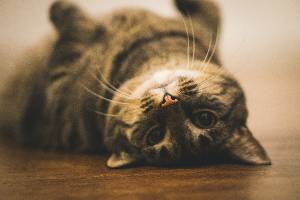
Coordination exercises
These help improve an animal’s awareness of its surroundings.
Electrical Stimulation Technique
A technique which uses electrical currents to either stimulate muscles or to numb pain.
Neuromuscular Stimulation
- very slight electrical impulses stimulate the base of the nerve and re-educate damaged nerves and weakened muscles
- strengthens and restores the function of specific muscles or muscle groups.
Deep Heat Ultrasound Therapy
- provides a method of penetrating heat deep into the muscle tissue
- ultrasound provides increased nerve conduction and muscle/joint flexibility while decreasing pain and muscle spasms.
Therapeutic Ultrasound
- for the treatment of arthritis, degenerative joint disease, or hip dysplasia
- general pain management (sprains, strains, and stiffness)
- post-surgical pain
- skin problems (hot spots, lick granulomas, infections)
- dental work
- fractures and wounds such as scratches or bites
- ear infections.
Stretching
Stretching differs from PROM because the joints are “pushed” with a bit more pressure
- Walking on a lead
- Walking up and down ramps and stairs
- Repeated sit-stand exercises
- Weaving through a line of poles or cones
- Alternately moving forward, backward, and to both sides
- Stepping over horizontal blocks or poles set at varying heights and distances apart.
Physio-balls
The body or feet are placed on a large inflatable ball that is then rolled or rocked from side to side.
Rocker or wobble board
Standing or rocking – helps improve balance.
Balance blocks
By standing on these blocks, they can be slid in different directions.
Swimming
A treatment which takes place within a specially designed water container.
Stimulating the feet
- rub, squeeze and tickle the feet, digging fingers in between the pads, play with the toes. This is done at various intervals throughout the day. It improves the ability to feel the feet and know where they are in space (proprioception).
- after paralysis, the body needs to retrace the link from the brain to the toes and the more the feet are stimulated, the more it is given to work with.
Scratching
Involves scratching the animal all over the body hoping to find an itchy spot. The animal could then begin to kick a hind leg in response to being scratched – they will enjoy this PT ?
Weight bearing
- put the animal in a standing position and press down lightly on the hips, bouncing the hips slightly while they resist
- support the animal with a free hand under the abdomen while doing this if needed.
Weight shifting
The physiotherapist puts the animal in a standing position and takes hold of its hips. She pushes the hips an inch or two to the right so the pet must support more weight on that side, then repeats the exercise pushing to the left.
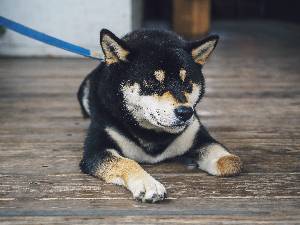
Assisted walking
- the animal is supported under the abdomen either with a harness or a bath towel
- holding the base of the tail can also be used although this can easily be dropped resulting in possible further injury for the animal so this sub-option is not recommended.
Placing the feet
- while bending down, hold the animal´s ankles and place the feet correctly with the paws pads down as the animal walks. It doesn´t matter if the rhythm is incorrect.
- the animal can also be laying on its back while you move the ankles so the paws are in an upside down walking motion as if taking steps.
Incline therapy
This is where a gentle slope such as a sloping pavement or long driveway is used and the animal starts at the top. He is encouraged to walk down alone with you standing at the bottom with treats. It works best with two people, one at the top for animal support and one at the bottom.
Step over
Laying down low obstacles, such as thin pieces of wood, the animal is helped to practice stepping over them.
Figures of Eight
The animal is assisted to practice turns and build strength on a weak side by walking through a series of figures of eight patterns.
Surfaces
Different types of surfaces are used (with care if they are slippery) such as pavement, grass, carpeting and gravel.
Hydrotherapy
- as above like Swimming
- excellent for recovering from paralysis
- all four extremities are worked even if the animal cannot balance or bear its own weight
- this therapy takes place in a small bathtub especially for pets or a hot tub or pool for larger animals
- flotation vests can be used if the animal needs one.
Acupuncture
- used to treat animals in China for over 3000 years
- heated needles are inserted into acupuncture points on the body and Vitamin B12 is injected
- as in humans, this therapy is very beneficial and has effective results in many problem areas, pain management, illnesses and overcoming injuries and surgery.
Traditional Chinese Medicine Evaluation
- used together with other forms of PT for pain management, the use of a mushroom supplement in animals with cancer has been shown to increase the quality of life over normal chemotherapy treatments
- benefits an animal´s unhealthy liver which can have negative effects on many other areas of the body.
Gait Training
When an animal has lost the use of his or her legs, gait training will help them learn to walk again, strengthening the leg muscles leading to greater independence.
Normal Land treadmill
If an animal can bear its own weight, slow exercise on this machine can improve function and movement.
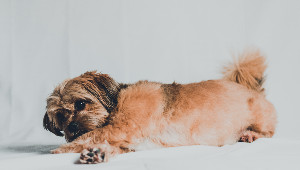
Doga (Dog Yoga)
- this is where humans can practise yoga with their pets
- includes gentle massage, stretching and chanting
- NB: Doga has not been validated officially. The Dogs Trust for example warns that unsupervised doga could affect the welfare of the dog if carried out by untrained people.
Weights or resistance can be added to any of the above exercises and Physical Therapy should be performed every 4-8 hours.
Physical Therapy On Animals
Are you an animal physiotherapist? How do you like your job? Has your beloved pet had to have physical therapy? Please feel free to tell me about your story. Always good to learn from others’ experiences. Thanks for reading ?
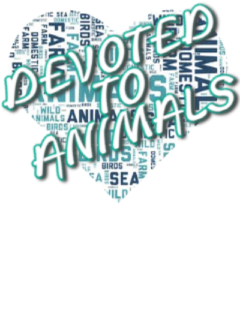
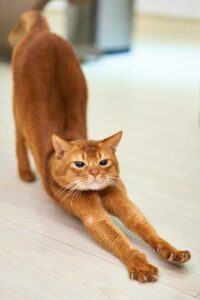
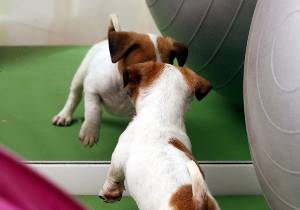




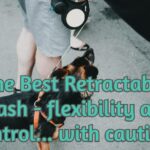
Really interesting article and what of approaching the topic.
Lots of different options and very original ones.
I’ll try definitely swimming/hydrotherapy one for my boxer as soon as summer arrives (she has arthritis)
Thank you Marta. Wishing your Boxer well. That will be really good for her ?